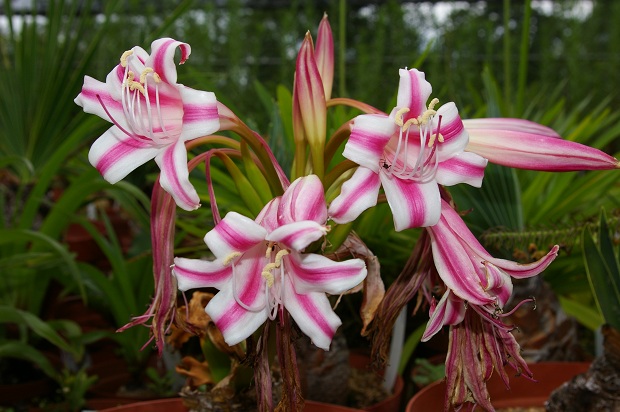Substances from the South African plant species Crinum and Cyrtanthus – akin to snowdrops and daffodils, respectively – have characteristics that enable them to negotiate the defensive blood-brain barrier, a key challenge in all new drug development.
Obviously you should not run out and start eating daffodils just yet. The lab test does not show which compounds can be used in drug development.
Associate Professor Birger Brodin says, "Several of our plant compounds can probably be smuggled past the brain's effective barrier proteins. We examined various compounds for their influence on the transporter proteins in the brain. This study was made in a genetically-modified cell model of the blood-brain barrier that contains high levels of the transporter P-glycoprotein. Our results are promising, and several of the chemical compounds studied should therefore be tested further, as candidates for long-term drug development.
"The biggest challenge in medical treatment of diseases of the brain is that the drug cannot pass through the blood-brain barrier. The blood vessels of the brain are impenetrable for most compounds, one reason being the very active transporter proteins. You could say that the proteins pump the drugs out of the cells just as quickly as they are pumped in. So it is of great interest to find compounds that manage to 'trick' this line of defence."
Discovering a new cure in 'Nature's medicine chest' will also take interdisciplinary work between chemists and biologists.

Crinum from South Africa. . Photo: Gary I. Stafford
Throughout evolution, plants have developed a number of substances as defenses against herbivores and disease and some of those plant compounds can also be used as medical drugs.
André Huss Eriksson, a research scientist at Bioneer:FARMA, and Associate Professor Birger Brodin contacted Associate Professor Anna Jäger of the Department of Molecular Drug Research and Associate Professor Nina Rønsted of the Natural History Museum of Denmark, who both work with medicinal plants that affect the central nervous system to collaborate on this new work.
"In my research group, we have had a long-term focus on the body’s barrier tissue – and in recent years particularly the transport of drug compounds across the blood-brain barrier. More than 90 per cent of all potential drugs fail the test by not making it through the barrier, or being pumped out as soon as they do get in. Studies of natural therapies are a valuable source of inspiration, giving us knowledge that can also be used in other contexts," said Birger Brodin.
Citation: Eriksson, A. H., Rønsted, N., Güler, S., Jäger, A. K., Sendra, J. R. and Brodin, B. (2012), 'In-vitro evaluation of the P-glycoprotein interactions of a series of potentially CNS-active Amaryllidaceae alkaloids', Journal of Pharmacy and Pharmacology. doi: 10.1111/j.2042-7158.2012.01536.x






Comments